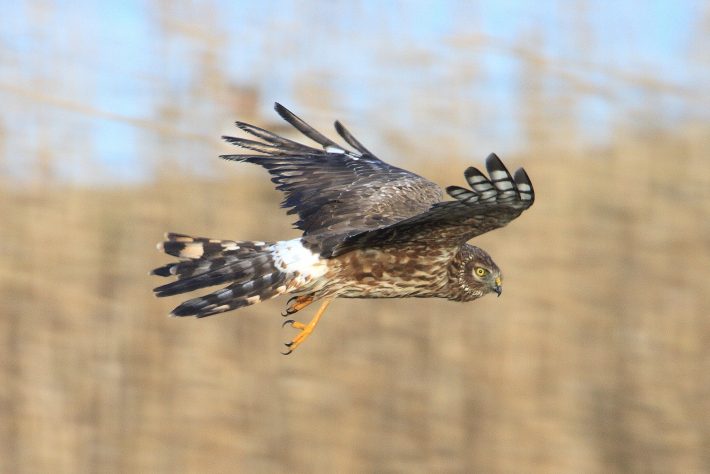Hen harrier row could help in other conservation conflicts
University of Exeter press release
The long-running row over Britain’s hen harriers could offer lessons for other conservation conflicts, according new research published in People and Nature.

Hen harriers’ prey includes birds that are shot for sport, especially red grouse, leading to conflict between shooting organisations and birds-of-prey conservation groups.
To see how this conflict has evolved over time, researchers at the University of Exeter have analysed almost three decades of UK newspaper. They find a peak of “polarisation” after the launch of a government-backed action plan for the recovery of hen harrier populations in 2016.
“Our research offers a variety of options that could help with other conservation conflicts,” said Filippo Marino, of the Centre for Ecology and Conservation on Exeter’s Penryn campus in Cornwall.
The hen harrier conflict appears to have worsened and become more polarised
“We identified the most polarising issues in the debate, and other areas where there was broad agreement. It’s useful for opponents to be aware that they share some common ground, and to understand their key areas of disagreement.
“Our findings also show that the hen harriers debate has been dominated by a few high-profile people and organisations. This has probably perpetuated the conflict, increased polarisation and hindered resolutions. Allowing new voices to speak might change the dynamics and help unlock this entrenched debate.”
In the study, the researchers examined 737 statements in 131 newspaper articles published from August 1993 to December 2019, finding three main themes in the debate: problems, solutions and reactions.
They found that a multitude of people and organisations contributed to the hen harrier debate. However, only a subset was regularly quoted.
“Despite a long history of conservation measures and the recent decline of territorial pairs of harriers in Great Britain, the hen harrier conflict appears to have worsened and become more polarised both in England and Scotland,” Marino said.
“A key point of conflict is a relocation scheme, known as brood management, that moves hen harriers away from grouse moors. Meanwhile, reintroduction of hen harriers in southern England – where numbers are lower compared to northern England and Scotland – have been less polarising.”
To read the full article for free click here:
, , , , & (2023). Stakeholder discourse coalitions and polarisation in the hen harrier conservation debate in news media. People and Nature, 00, 1– 16. https://doi.org/10.1002/pan3.10437
Like what we stand for?
Support our mission and help develop the next generation of ecologists by donating to the British Ecological Society.